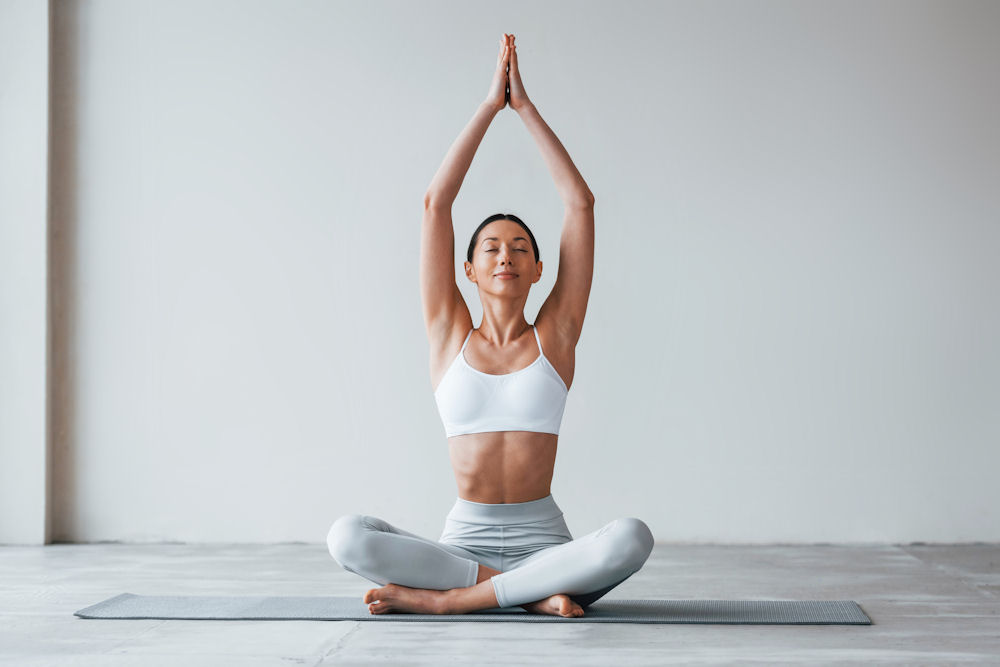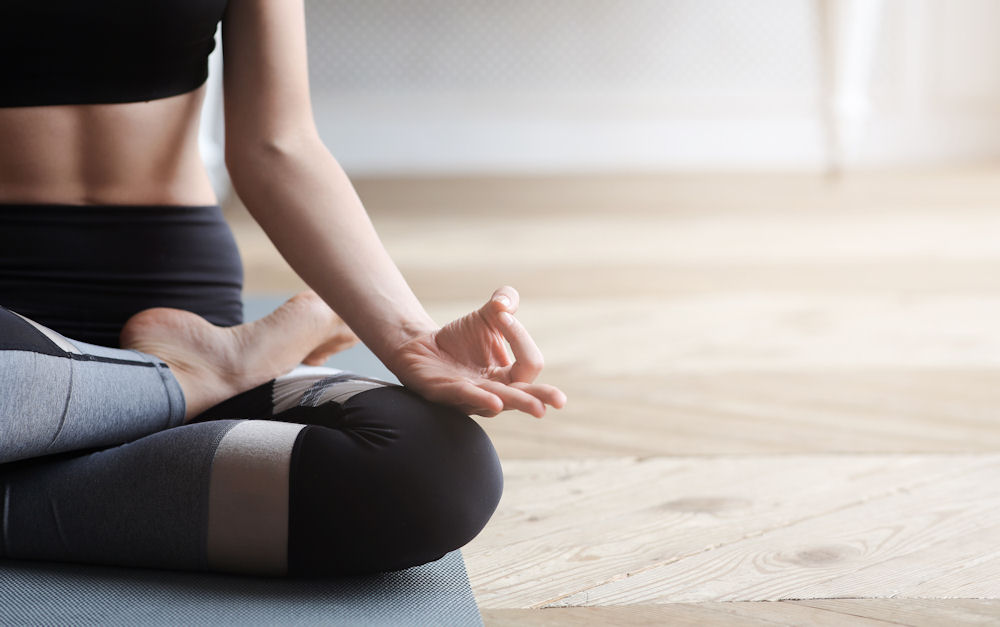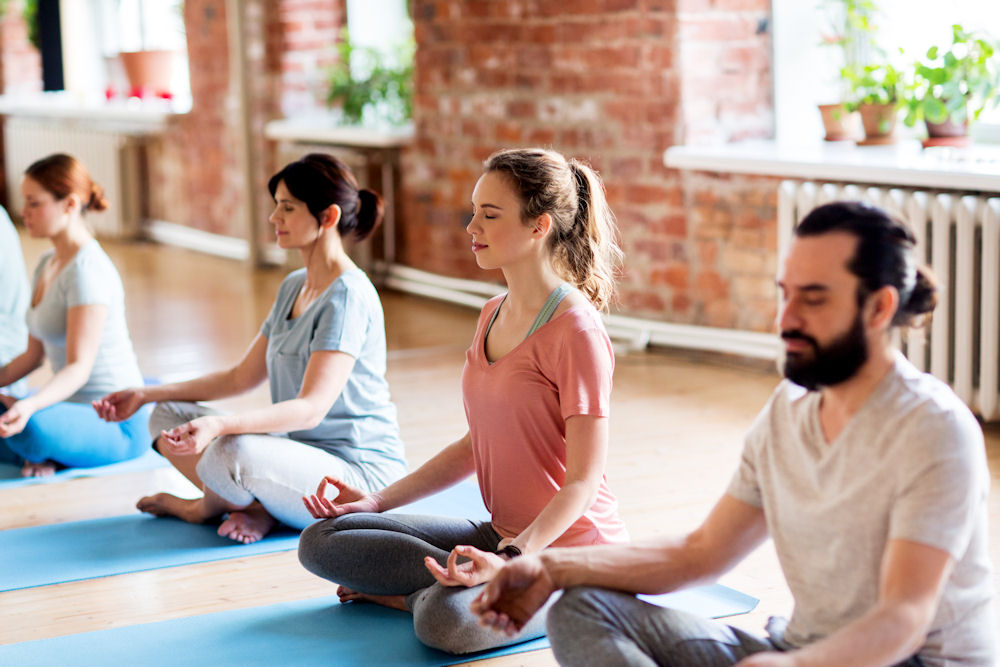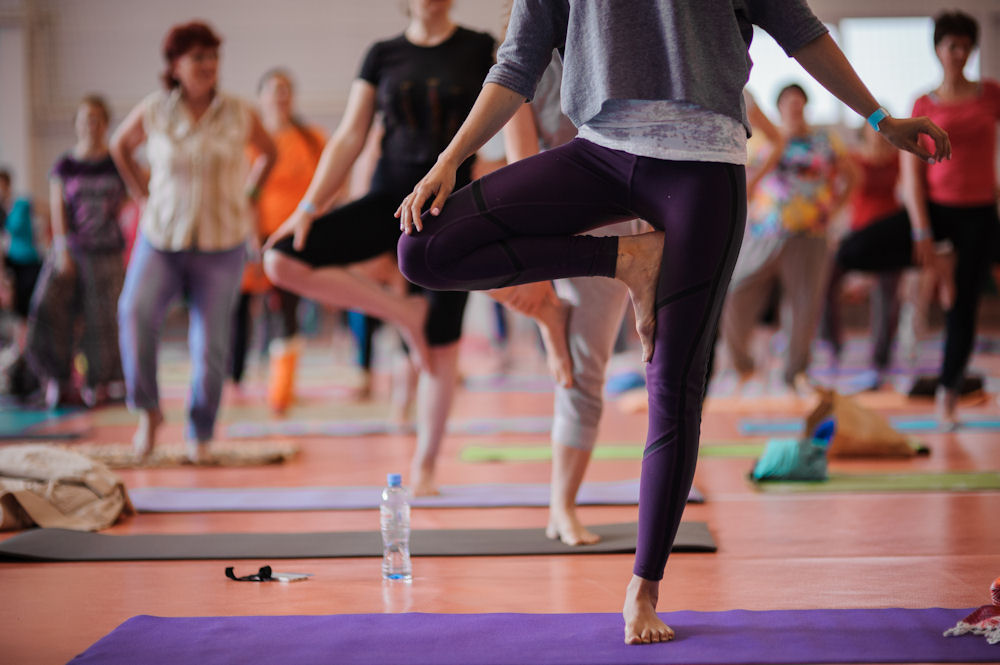In this post, we’ll dive into how yoga therapy blends science with soul, why it’s not just another wellness trend, and how you can start your journey toward balance. Get your mat and spandex ready.
A yoga therapist works one-on-one (or sometimes in small groups) to create a practice that’s designed to fit your specific personal needs. They use different poses, breathing exercises, and meditation techniques to support whatever’s going on in your life. The goal is to guide you toward healing, balance, and overall well-being.

How Can Yoga Help Your Mental Health?
One of the biggest ways yoga helps mental health is by reducing stress. The focus on breathing, especially, helps trigger the relaxation response, calming the mind and easing anxiety. It’s a way for you to hit the reset button on your brain and give yourself space to let go of all the racing thoughts that come with stress.
Yoga also encourages mindfulness (being present in the moment) and that can help you cultivate a sense of peace. When you’re fully engaged with your breath and body, it’s harder for your mind to wander into the future or get stuck in negative patterns. Plus, many yoga practices incorporate meditation, which has been proven to reduce symptoms of anxiety and depressive disorders.

What Are The Overall Benefits Of Yoga Therapy?
One of the biggest benefits is how it helps reduce stress and anxiety. By focusing on breath, mindfulness, and gentle movement, yoga therapy calms the nervous system and helps you feel more relaxed and grounded.
Whether you’re dealing with chronic pain, stiffness, or discomfort, yoga therapy can help ease tension, improve flexibility, and reduce physical discomfort through personalized practices.
Many people find that yoga therapy helps them sleep better by calming their minds, reducing racing thoughts, and helping them relax before bed.
Through mindful breathing and body awareness, yoga therapy helps you manage emotions like anxiety, depression, and emotional blockages, offering a deeper connection to yourself.
It encourages being present and connected to your body, which helps you stay grounded and reduce mental distractions or negative thought patterns.
Yoga therapy focuses on gentle, intentional movement that builds strength, flexibility, and better overall body awareness, especially if you’re recovering from an injury or dealing with limitations.
Do You Have To Be Flexible To Benefit?
Yoga therapy is personalized, meaning a certified therapist will create a practice that works with your unique needs. So, whether you’re stiff, have limited mobility, or just feel like you’re starting from scratch, you just need to be ready to show up and explore what works best for you.

How Does Yoga Therapy Work For Trauma?
Trauma often gets stored in our bodies, so instead of just focusing on the mind, yoga therapy helps you reconnect with your body in a gentle, non-judgmental way. If you’ve ever been for a professional massage, you may have heard that someone is “carrying stress/ tension in their shoulders”. Through things like breathing exercises, gentle poses, and meditation, yoga therapy helps you feel safe in your body again and begin to release stored tension. It creates space for self-reflection and encourages you to be present without rushing or forcing healing.

What’s The Science Behind Yoga And Healing?
Studies have found that regular yoga practice can help lower anxiety, depression, and even symptoms of chronic pain. One reason is that yoga encourages awareness of the body and breath, which helps you stay grounded and present. When you’re less stressed, your body is better able to heal itself because stress can weaken your immune system and slow down recovery.
Yoga also helps improve circulation, flexibility, and strength, which can support physical healing, especially if you’re dealing with injuries or chronic pain. Plus, meditation and mindfulness practices associated with yoga can boost mental clarity and focus, helping you process emotions and release tension.
What Does A Yoga Therapy Session Look Like?
- One-on-One Attention: Unlike a group class, yoga therapy often happens in a one-on-one setting or with small groups.
- Customized Practice: The session is tailored to your requirements. You won’t be doing the same poses as everyone else.
- Breath & Mindfulness: A big part of yoga therapy is focused on breathwork and mindfulness. You’ll spend time slowing down, paying attention to your breath, and grounding yourself, which helps calm the nervous system and reduce stress.
- Gentle Movements & Poses: The poses are often gentle and tailored to your body. Instead of aiming for flexibility or perfect alignment, the focus is on what feels good and supportive for your body.
- Guided Reflection: The session may include guided meditation, journaling, or breathing exercises designed to help you connect with your thoughts and emotions in a calm, centered way.
How Do You Find The Right Yoga Therapist?
First, think about what you want help with—whether it’s stress, chronic pain, trauma, or something else.
To avoid the unqualified, look for certified yoga therapists (usually with a designation like C-IAYT, which stands for Certified Yoga Therapist). This means they’ve completed specialized training to work with individuals on a deeper, therapeutic level.
Online reviews or word-of-mouth recommendations can give you a sense of a therapist’s style and how they’ve helped others.
Don’t be afraid to reach out and ask potential therapists about their experience, approach, and how they tailor sessions to individual needs. A good yoga therapist will be open and willing to answer your questions.
Most importantly, find someone who feels like a good fit for you. A supportive, understanding, and approachable yoga therapist can make all the difference in your healing journey.
Can Breathing Really Change How You Feel?
Deep breathing signals your nervous system to switch from “fight or flight” mode to “rest and digest,” which helps reduce stress, lower anxiety, and create a sense of calm. You’ve probably noticed before how a deep breath can instantly make you feel a little more grounded. That’s because your body naturally responds to slower, deeper breaths by reducing cortisol (the stress hormone) and activating the relaxation response.
Yoga focuses a lot on breathing because it’s one of the easiest ways to tap into your body’s ability to heal and relax. Whether it’s through yoga, meditation, or just taking a few mindful breaths, breathing can truly change how you feel and help you find more peace in your day-to-day life.


How Can You Use Yoga Therapy In Everyday Life?
- Breathe Through Stress: The office, traffic, school, and other social situations are magnets for increased stress and risks of becoming overwhelmed. A few deep breaths can refocus your thoughts and ease away built-up tension. Just pausing to take a few slow breaths can help you feel more grounded and less anxious.
- Stretch & Move Gently: If you’re dealing with physical discomfort or tightness, gentle stretches throughout the day can help ease tension. Rolling your shoulders or stretching your hips are little moments of movement that help you feel more comfortable.
- Mindfulness Moments: Pausing to check in with yourself can help you stay present and reduce mental clutter. Even a quick minute of focusing on your breath can make a big difference.
- Self-Care Rituals: Incorporating yoga therapy principles into your morning or evening routine, like a few minutes of meditation or simple stretches, helps create a sense of calm and intentionality.
Arkview Recovery Offers Yoga Therapy in Mechanicsburg, PA
If you’re looking for a supportive way to manage your mental health, build resilience, or simply create more peace, Arkview Recovery’s yoga therapy could be a great tool for your journey. Contact us today to get a step ahead on the road to mindfulness and wellness.


















